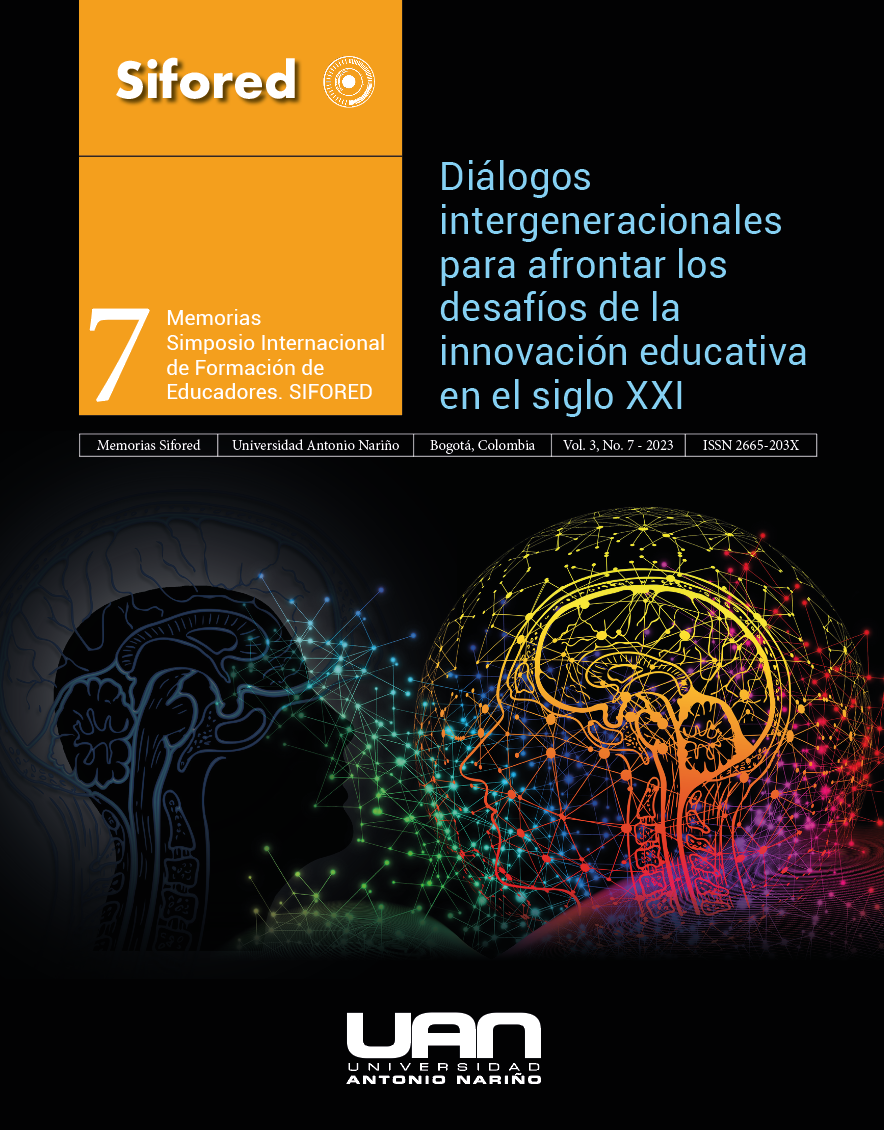Tejido del pueblo nasa y la geometría. Un diálogo intercultural para el desarrollo de procesos de aprendizaje en estudiantes de cuarto de primaria.
Palabras clave:
pueblo nasa, etnoeducación, tejido, matemáticas, inclusiónResumen
Se presentan los resultados de la implementación de una propuesta didáctica apoyada en la etnomatemática, para el fortalecimiento del diálogo intercultural entre los pueblos indígenas y los saberes de occidente. El objetivo fue valorar la efectividad de una estrategia didáctica para el reconocimiento del pueblo indígena nasa y sus saberes propios sobre el tejido con estudiantes de grado cuarto de primaria de un colegio de Bogotá y, establecer la relación entre estos conocimientos y los propuestos en el currículo para el aprendizaje de la geometría. Para ello se optó por un paradigma interpretativo y un enfoque metodológico cualitativo, durante dos fases: la primera, consistió en entrevistar a dos sabios del pueblo nasa para acceder a los saberes propios y, la segunda, en el diseño e implementación de un material didáctico durante 11 sesiones. Se concluyó que el desarrollo de este tipo de estrategias genera apropiación de la diversidad cultural y multiétnica y el fortalecimiento del pensamiento geométrico en estudiantes occidentales.
Descargas
Citas
Alvarez, H. B. (2006). La Etnomatemática en Colombia: un programa en construcción. Boletim de Educação Matemática, 19(26), 1-19.
Alvarez, H. B. (2008). Entrevista al profesor Ubiratan D'Ambrosio. Revista latinoamericana de Etnomatemática, 1(1), 21-25.
Álvarez, H., Higuita Ramírez, C., & Oliveras, M. L. (2014). Una mirada a la Etnomatemática y la Educación Matemática en Colombia: caminos recorridos. Revista Latinoamericana de Etnomatemática: Perspectivas Socioculturales de la Educación Matemática, 7(2), 245-269.
Chavaco, Y. F. (2019). Construcción de Significados Culturales a partir de los Tejidos que Elaboran las Mujeres Nasa de Tierradentro como estrategia de Comunicación para la Pervivencia. Ciencia e Interculturalidad, 25(2), 277-289. https://www.camjol.info/index.php/RCI/article/view/8574/9461
Constitución Política de Colombia [Const]. Art. 7 y 8. 7 de julio de 1991 (Colombia).
D’Ambrosio, U. (2014). Las bases conceptuales del Programa Etnomatemática. Revista Latinoamericana De Etnomatemática Perspectivas Socioculturales De La Educación Matemática, 7(2), 100-107. Recuperado a partir de https://www.revista.etnomatematica.org/index.php/RevLatEm/article/view/126
Fernández, V. E. R., Ipanaque, R. A., Torres, F. D. M. G., Salazar, J. M. R., Caycho, H. E. C., & Gamboa, E. N. E. (2023). Etnomatemáticas y el entorno Universitario.
Fuentes, C. (2014). Descolonizando la escuela: ¿Es Posible Llevar la Etnomatemática al aula?. Revista Latinoamericana de Etnomatemática Perspectivas Socioculturales de la Educación Matemática, 7(2), 222-244.
García, L. P. (2013). El Paradigma Cualitativo–Interpretativo. Ser alumno de doctorado en competencias educativas, 143. http://aulavirtualmx.com/Archivos/LIBRO_SER_ESTUDIANTE.pdf#page=137
Ministerio de Educación Nacional (MEN). (1998). Lineamientos curriculares. https://www.mineducacion.gov.co/1621/articles-89869_archivo_pdf9.pdf
Ministerio de Educación Nacional (MEN). (2006) Estándares básicos de la educación matemática. https://www.mineducacion.gov.co/1759/articles-340021_recurso_1.pdf
Morales Beleño, M., Aroca-Araujo, A., & Alvarez Toro, L. J. (2018). Etnomatemáticas y Educación matem
ática: análisis a las artesanías de Usiacurí y educación geométrica escolar. Revista Latinoamericana De Etnomatemática Perspectivas Socioculturales De La Educación Matemática, 11(2), 120-141. Recuperado a partir de https://www.revista.etnomatematica.org/index.php/RevLatEm/article/view/520
Quiguanás, A. (2011). LOS TEJIDOS PROPIOS: SIMBOLOGÍA Y PENSAMIENTO DEL PUEBLO NASA. Radioteca.net. https://radioteca.net/media/uploads/manuales/2015_08/LOS_TEJIDOS_PROPIOS_SIMBOLOG%C3%8DA_Y_PENSAMIENTO_DEL_PUEBLO_NASA.pdf
Descargas
Publicado
-
Resumen560
-
PDF240
Cómo citar
Número
Sección
Licencia

Esta obra está bajo una licencia internacional Creative Commons Atribución-NoComercial-CompartirIgual 4.0.


 Portal de Ciencia Abierta
Portal de Ciencia Abierta